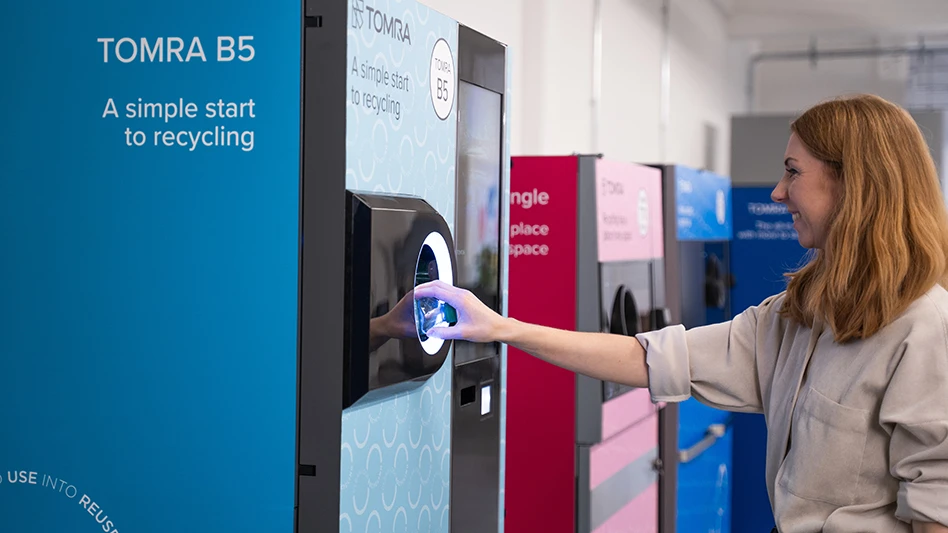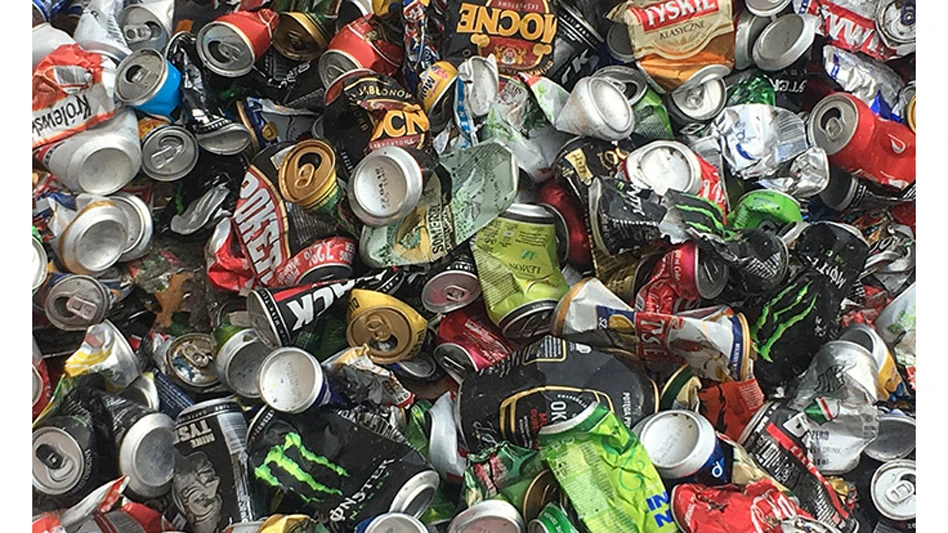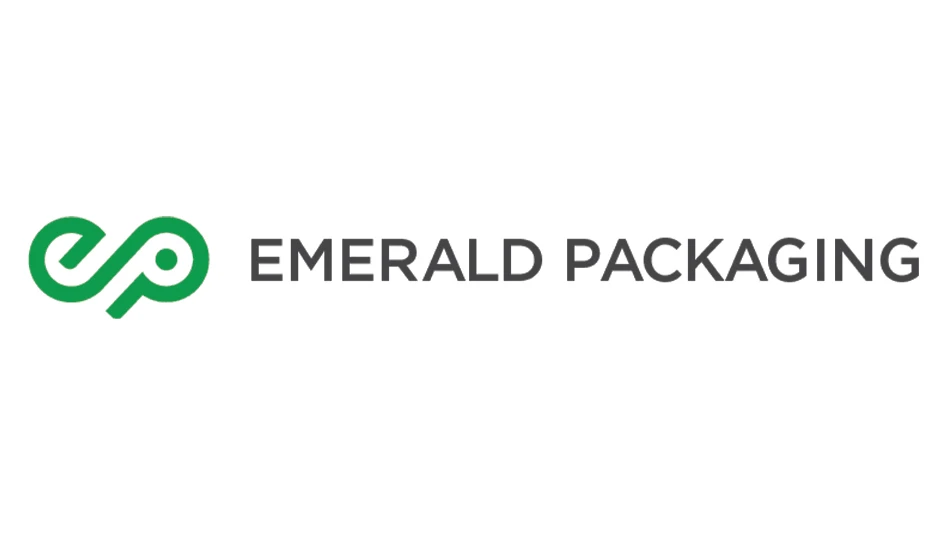
Awareness of the devastating effects of plastic pollution has grown in the past few years. Companies and consumers have responded by promoting recycling programs, offering incentives to reduce and reuse waste and supporting recycling-centric legislation.
But plastic usage and pollution are set to nearly triple in the next 20 years, according to S&P Global Platts Analytics; therefore, the shift toward sustainable materials is more important than ever for individuals and industry alike. Amid a public outcry for more eco-friendly and green options, brand owners are moving away from plastic packaging and have shifted toward alternatives, most notably, aluminum.
Aluminum has long been touted as the beverage package of choice because of its infinitely recyclable nature. PepsiCo and Coca-Cola are of selling water in aluminum cans as a part of their efforts to cut down on plastic waste. And at the Super Bowl in 2020, 50,000 plastic beer cups were replaced with aluminum alternatives.
But plastic containers also have the potential to be a “green” alternative as companies are finding ways to incorporate recycled content into their packaging and create the infrastructure to achieve this.
Will the future of recycling belong to polyethylene terephthalate (PET) beverage containers, or will aluminum continue to have a strong foothold in the market, replacing more and more plastics and other beverage containers, such as glass and steel?
The recycling rates for PET and plastics are extremely low in comparison with aluminum. According to the latest data published by the National Association of PET Container Resources (NAPCOR), Charlotte, North Carolina, the U.S. PET recycling rate in 2019 was 27.9 percent, down 1 percentage point from 2018, mostly because the U.S. is processing more plastic domestically, following widespread plastic scrap import bans across the world.
Compare that with aluminum beverage can recycling figures from 2019 that show the industry recycling rate for beverage cans is 55.9 percent, while the consumer recycling rate for used beverage cans (UBCs) is 46.1 percent. Although these industry and consumer figures also were down from the previous year, largely because of production shifts, this packaging represents nearly half of the economic value of recyclables generated by a typical single-family home, according to the Aluminum Association, Arlington, Virginia.
Economics of sustainable packaging
UBCs generally are more valuable than plastic and help to subsidize the recycling of other lower value materials. In addition, UBCs are easier to recycle and are much cheaper and less labor-intensive than plastic to sort because of their uniformity.
UBCs also are infinitely recyclable in a closed-loop process, which leads to greater recycled content in a beverage can than its plastic counterpart.
However, half of all cans produced still head to landfills. In 2019, 50 billion cans ended up in waste streams, which equates to more than $810 million worth of aluminum, a major loss to the economy and the environment.
When looking at plastic recycling, it is often seen as complex and confusing. Each municipality has its own rules about recycling plastic and which materials are acceptable as well as confusing rules for consumers, such as whether caps remain on the bottle or not. Contamination levels associated with plastic packaging also tend to be higher, and there is a lack of uniformity in terms of packaging design and production. All these variations lead to more work and greater costs. And for some plastic containers, the levels of contamination, or the use of multiple types of polymers, labels and dyes, don’t allow them to be mechanically recycled at all.
Market dynamics
Plastic and aluminum have value in the marketplace that depends on supply and demand trends. In June, the average price of UBCs in the Midwest was $1,692 per metric ton, while curbside PET bottle bales in the Midwest averaged $485 per metric ton, according to Platts data.
Aluminum can supply also is fairly stable compared with PET bottles, with less extreme fluctuation in market value and greater profit margins along the supply chain.
Since the beginning of the coronavirus pandemic in spring 2020, the price of PET bottle bales has fluctuated greatly because of supply disruptions in the virgin market and strong export demand in late 2020/early 2021. In July 2021, postconsumer PET bottle bales in California averaged $735 per metric ton compared with an average price of $198 per metric ton in July 2020, representing a nearly 271 percent increase year on year.
Part of the reason for carrying a higher value is because the raw material cost for a UBC is nearly 25 to 30 percent more than a PET bottle of similar volume. While margins for aluminum processors might be higher than for plastic recyclers, brand owners see better profit margins for PET than for aluminum. It essentially costs more per ounce to make a 12-ounce canned soda than it does to make a 20-ounce bottled soda; however, these costs don’t always get passed along to the consumer as companies tend to charge more for the higher volume bottled soda.
Environmental impacts of packaging production
Another hot button topic is the environmental impacts of plastic and aluminum production. Whether it’s mining bauxite for aluminum or fracking for oil or natural gas needed in plastic production, both processes are detrimental to the environment. And considering that more cans are being recycled than bottles and, therefore, less virgin production is necessary, the production of one single aluminum can emits about twice as much carbon into the atmosphere as each plastic bottle.
Aluminum is very energy-intensive to produce and has a higher carbon footprint, responsible for 11.09 tons of CO2 emissions per ton of cans, while plastic bottles account for only 2.2 tons of greenhouse gases, according to a 2016 study by the EPA.
Cans have a higher recycled content, averaging 73 percent, compared with 6.2 percent in PET bottles, so it is hard to quantify and compare the total amount of carbon emissions for the two recycled products. Making beverage containers out of recycled products is clearly the most cost-efficient and environmentally sustainable solution for aluminum and plastic.
Producing cans out of recycled content saves 90 percent of greenhouse gas emissions, while each unit of recycled PET that replaces virgin results in 75 percent lower total energy demand and a 60 percent reduction in greenhouse gas emissions, according to NAPCOR.
Aluminum and plastic packaging have the potential to be more economical and more sustainable if companies choose to devote time and resources to making that happen. By replacing packaging composed of less widely recycled plastics, such as Nos. 3-7s, with highly recyclable aluminum, as well as incorporating a higher percentage of recycled content in PET plastic products, companies can further progress toward a greener world.
Sarah Baltic is managing editor, Americas Aluminum markets, S&P Global Platts, and Sarah Schneider is editor, Americas Petrochemical markets, S&P Global Platts.
Latest from Recycling Today
- ReMA urges open intra-North American scrap trade
- Axium awarded by regional organization
- China to introduce steel export quotas
- Thyssenkrupp idles capacity in Europe
- Phoenix Technologies closes Ohio rPET facility
- EPA selects 2 governments in Pennsylvania to receive recycling, waste grants
- NWRA Florida Chapter announces 2025 Legislative Champion Awards
- Goldman Sachs Research: Copper prices to decline in 2026





